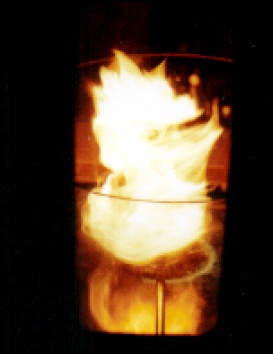New Zealander First To Explain UFOs
PRESS RELEASE:
New Zealander First To Explain UFOs
For centuries unexplained lights have appeared in the night sky with no suitable theory though many have been advanced. A New Zealander is claiming he was the first to successfully explain the mystery lights commonly called "UFOs" with a unified theory. These are the hard-to-explain UFO cases. Author and researcher Peter Coleman has revealed the real science behind these unexplained UFO fireballs.
His unified theory not only explains these UFO chariots of fire but in one sweeping theory ball lightning, the Tunguska "meteor", the Kaikoura UFOs, the Australian Min mins, the will o' the wisp and several other events are accounted for. Not content with theory he has actually created the fireballs in the laboratory and published the results in a 1999 Spring issue of EOS Transactions a publication of the American Geological Union.
His theory first appeared in 1993 in Weather (publication of Royal Meteorological Society of the UK) and in New Scientist 22 May, 1999. He has since written two books Ball Lightning-a scientific mystery explained (limited edition) that challenges the idea that ball lightning is an unsolved problem especially the book by Mark Stenhoff called Ball Lightning- an unsolved problem. Peter's latest book is Great Balls of Fire-A unified theory of UFOs, ball lightning, Tunguska and other anomalous lights is expected to be available sometime this year.

CAPTION: This was produced in a specialised combustion chamber with air flowing in through vanes at the bottom to create a vortex. The fuel gas is LPG. The gas is burning within the vortex environment. The confined vortex coupled with the burning gas is experimental. One would expect to see an unconfined vortex burning and moving at the same time. These vortex fireballs can get larger up to several meters in diameter. It is this phenomenon that the author is proposing to explain UFO fireballs, ball lightning and some anomalous meteors.
The key idea is that many UFO reports are actually luminous vortices. Only vortices have the power and unpredictibility to account for extreme events. Couple this to the idea that a vortex is actually on fire in a spheroidal zone of vortex breakdown and you have a potent formula that will explain many puzzling lights.
Vortex breakdown is the essential element. The low air speeds in this region enable a combustion flame to survive amidst the surrounding high speed air streams. Imagine seeing such a vortex at night all that you would see would be the fireball region moving around in seemingly unpredictable fashion and against the wind!
That such atmospheric vortex burners should exist is indisputable and first postulated by Coleman. The whole concept is firmly based on known ideas and results in science. Coleman believes that a correct solution could not have eventuated prior to 1957 simply because vortex breakdown was discovered in 1957 on the leading edge of model wings of planes.
The speculation and confirmnation that naturally occurring vortices should exhibit vortex breakdown would have have come later. Vortex breakdown has been seen in tornadoes only relatively recently by Pauley and Snow in 1988. Reports in early meteorological literature testify that such vortex burners exist. Collectively there is now sufficient evidence in favour of this unified theory.
Dr Stanley Singer a ball litghtning researcher, retired Professor Karl Nickel, Russian Scientists such as Marina Pankova and now a prominent scientist and physicist Bernard Haisch thinks that the theory may explain some UFOs.
Peter F Coleman 75 Wychbury St Christchurch phone 960-9905


 Watercare: Watercare Gets To Work On First Permanent Non-Potable Water Tanker Filling Station In Māngere
Watercare: Watercare Gets To Work On First Permanent Non-Potable Water Tanker Filling Station In Māngere Alcohol Healthwatch: Licensing Decision Lauded For Prohibiting Buy Now Pay Later Schemes In Bottle Stores
Alcohol Healthwatch: Licensing Decision Lauded For Prohibiting Buy Now Pay Later Schemes In Bottle Stores Motor Industry Association: Vehicle Registrations Up 5.6% In December, But Year-To-Date Sales Reflect Market Challenges
Motor Industry Association: Vehicle Registrations Up 5.6% In December, But Year-To-Date Sales Reflect Market Challenges BNZ: Depression-era Bequest Still Helping 88 Years Later
BNZ: Depression-era Bequest Still Helping 88 Years Later Hugh Grant: How Can Telehealth And Home Healthcare Solutions Be Helpful?
Hugh Grant: How Can Telehealth And Home Healthcare Solutions Be Helpful? New Zealand Merino Company: The New Zealand Merino Company Will Investigate PETA Claims
New Zealand Merino Company: The New Zealand Merino Company Will Investigate PETA Claims



